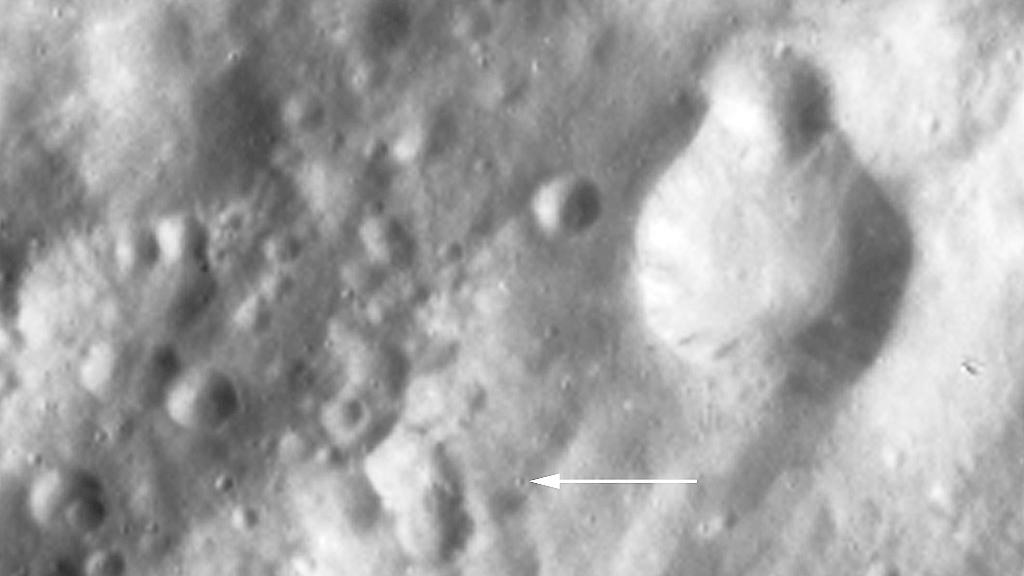Claudia – a tiny crater defining Vesta’s prime meridian
Claudia – a tiny crater defining Vesta’s prime meridian
Location is everything! This truism is valid on Earth and of course also in space – and for objects in the Solar System – as well. So when NASA’s Dawn spacecraft arrived at Vesta, one of the first tasks was to determine the precise orientation of the asteroids rotation axis, and to define a prime meridian from which 360 degrees can be counted to the east or west. This image shows a tiny crater about 500 metres in diameter (arrow) – named Claudia by the Dawn science team – that defines Vesta’s prime meridian which runs from the asteroid’s north pole to its south pole.
When German astronomer Heinrich Olbers discovered Vesta on 29 March 1807 from his private observatory in Bremen, Germany, he named the asteroid after the Roman goddess of home, hearth and family – Vesta. In ancient Rome the sacred fires in Vesta’s temples have been guarded by the Vestals, who reignited the fires every first day of March. Claudia, the daughter of the Roman consul at the time, Appius Claudius Pulcher (‘the beautiful’), was a virgin Vestal in Rome during her father’s reign in 143 BC.

